Decentralized Identifiers
(DIDs)
Presentation held at the Fintech event of the W3C Chinese Web IG, on 2020-12-19
Ivan Herman, ivan@w3.org
Introduction
What are the problems?
A typical experience
Consider these two scholarly references:
- Tomislav Strinić, Damir Buković, Ljubomir Pavelić, Josip Fajdić, Ivan Herman, Ivica Stipić, Ivan Palada & Ivana Hirš, “Anthropological and clinical characteristics in adolescent women with dysmenorrhea”. Collegium antropologicum, 27(2), (2003).
- Ivan Herman, Markus Gylling, “Bridging the Web and Digital Publishing”, The Journal of Electronic Publishing, (2015).
- Only one of the two publications is mine…
- The name is not enough; you need a unique personal identification to avoid problems with, in this case, homonyms
- This has become even more important in a networked, digital world
No identifiers display all those requirements!
A DID is a self-sovereign identity, i.e., lifetime, portable, and verifiable digital identity that does not depend on any centralized authority
High level view on DIDs
High level view: DIDs and DID Documents

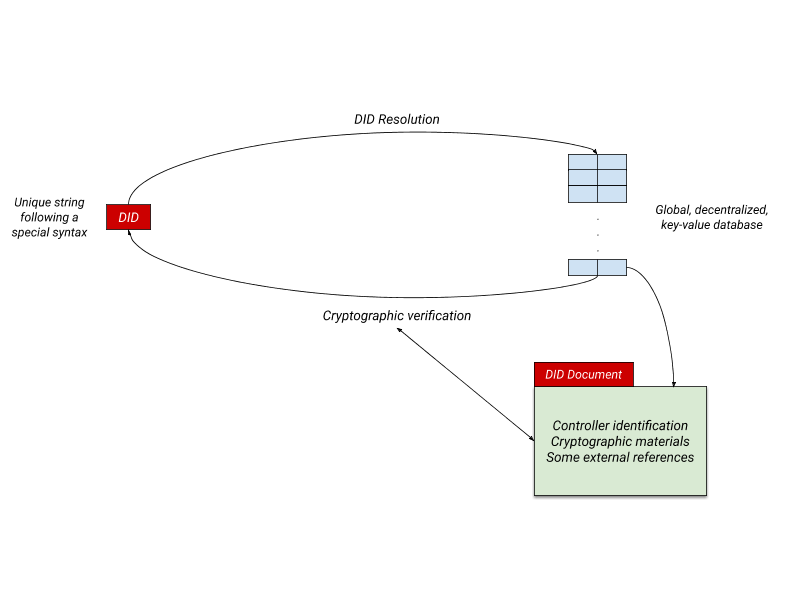
Some use cases
Find information on purchased goods

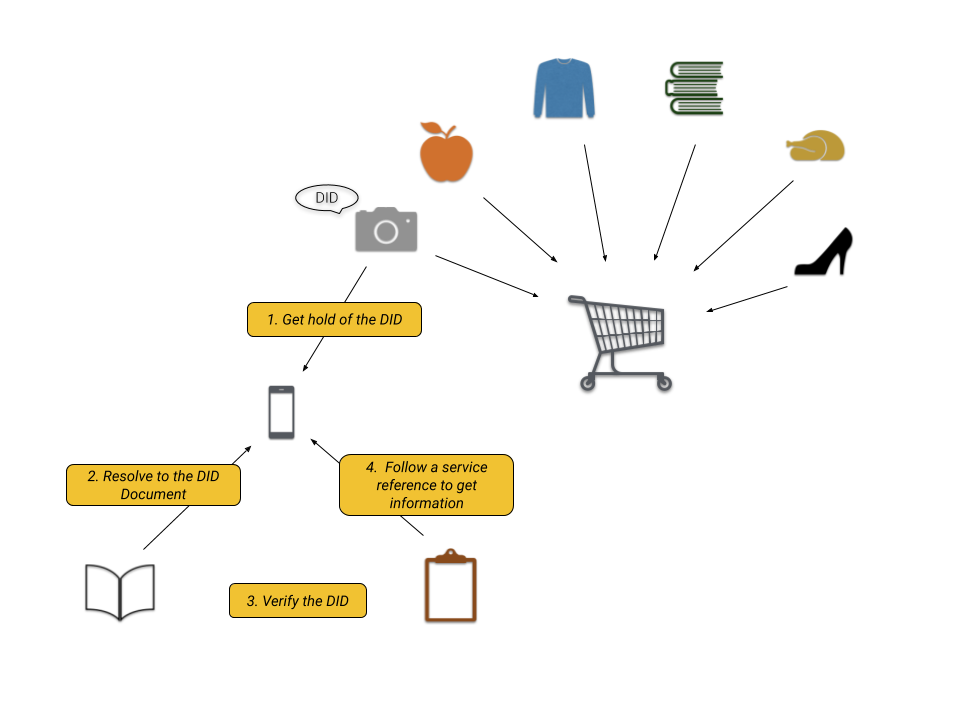
Find information on purchased goods


- It is very important that:
- the identification is unique and persistent
- the information has not been tampered with
Pool of relationships

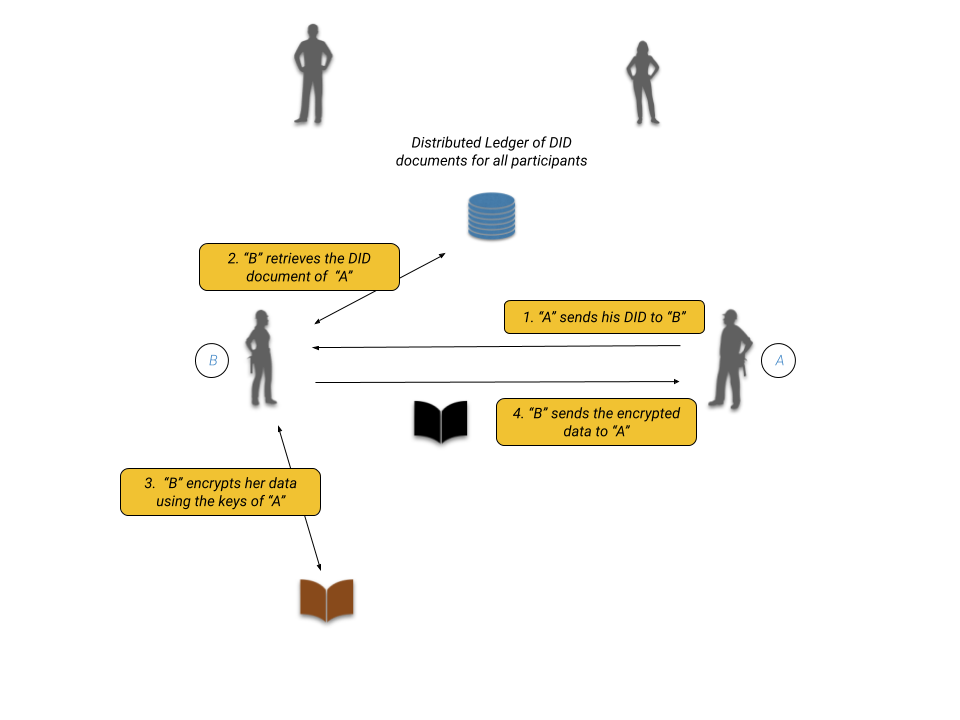
Pool of relationships


-
No need for centralized key management
- there may be different ledgers for the various participants
- Both “A” and “B” may remain anonymous
How do DIDs look like?
Reminder: URIs, URNs, URLs, …

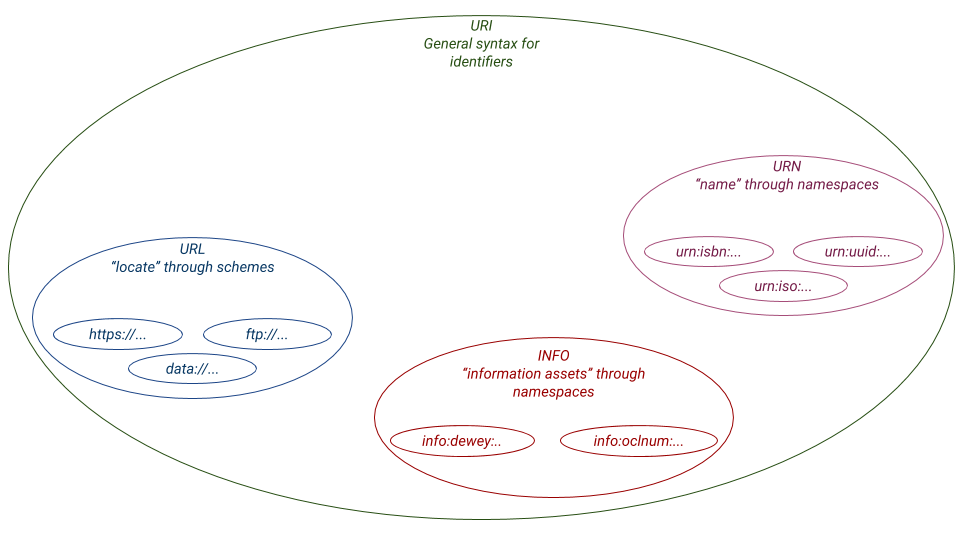
DID is a new type of URI

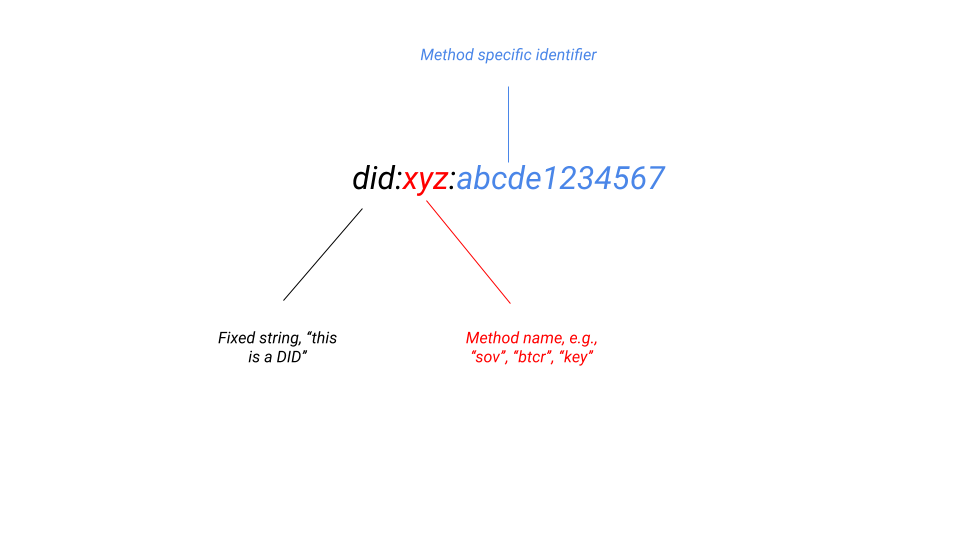
DID is a new type of URI


How do DID Documents look like?
Some closing remarks
Documents to read
- Use cases and requirements
- https://www.w3.org/TR/did-use-cases/
- Core specification
- https://www.w3.org/TR/did-core/
- DID Specification Registries
- https://www.w3.org/TR/did-spec-registries/
- These slides
- https://iherman.github.io/did-talks/talks/2020-Fintech/
Some more documents to come
- DID Method Rubric
- Documenting what criteria to look for when choosing a specific method
- Implementation guide
Thank you for your attention!
ivan@w3.org
These slides: https://iherman.github.io/did-talks/talks/2020-Fintech/#/